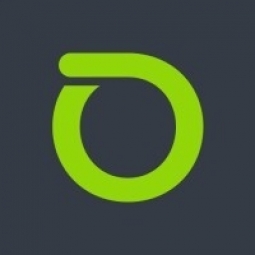Customer Company Size
Large Corporate
Region
- America
Country
- United States
Product
- NETSCOUT solutions
- Arbor Cloud
- AED
Tech Stack
- DDoS Protection
- Data Analysis
- Hybrid Cloud Solution
Implementation Scale
- Enterprise-wide Deployment
Impact Metrics
- Digital Expertise
- Brand Awareness
- Cost Savings
Technology Category
- Cybersecurity & Privacy - Network Security
- Infrastructure as a Service (IaaS) - Hybrid Cloud
Applicable Industries
- Pharmaceuticals
Applicable Functions
- Business Operation
Use Cases
- Cybersecurity
- Infrastructure Inspection
Services
- Cybersecurity Services
- Cloud Planning, Design & Implementation Services
About The Customer
A US based pharmaceutical company that manufactures prescription pharmaceuticals for a range of therapeutic areas including cancer, HIV/AIDS, cardiovascular disease, diabetes and arthritis was looking for a DDoS Protection Solution. Fortunately, they were already a customer of NETSCOUT for Service Assurance and had a trusted relationship with us and one of our partners.
The Challenge
The organization did not have any DDoS protection going into this year and did not believe they had been attacked that frequently. They were hearing about an increase in DDoS attacks targeting peers within their industry. They were also aware that overall DDoS attacks increased 15% this past year and that the volume and size of DDoS attacks increased during the last six months of 2020. However, they didn’t feel they needed DDoS protection as a pharmaceutical company because they weren’t transacting business on a commercial web site, and they had yet to experience any DDoS extortion attempts against them.
The Solution
In due time, our shared partner made us aware of a small attack that had occurred against one of their data centers. The NETSCOUT Team requested attack data from our ASERT Team to identify the who, what, where, and when of the attack and correlated that data with additional data from the customers ISNG probes to provide a clear picture of the types of attacks that were currently hitting their systems. This analysis helped the NETSCOUT Team display the potential risk to the customer and the value of having some DDoS protection. They also delivered the message that DDoS protection is not just about protecting an E Commerce site but also protecting infrastructure so that the applications and services that use the internet continue to run and be available so their employees who use those applications continue to be productive for the business.
Operational Impact

Case Study missing?
Start adding your own!
Register with your work email and create a new case study profile for your business.
Related Case Studies.

Case Study
Case Study: Pfizer
Pfizer’s high-performance computing software and systems for worldwide research and development support large-scale data analysis, research projects, clinical analytics, and modeling. Pfizer’s computing services are used across the spectrum of research and development efforts, from the deep biological understanding of disease to the design of safe, efficacious therapeutic agents.

Case Study
Fusion Middleware Integration on Cloud for Pharma Major
Customer wanted a real-time, seamless, cloud based integration between the existing on premise and cloud based application using SOA technology on Oracle Fusion Middleware Platform, a Contingent Worker Solution to collect, track, manage and report information for on-boarding, maintenance and off-boarding of contingent workers using a streamlined and Integrated business process, and streamlining of integration to the back-end systems and multiple SaaS applications.

Case Study
Process Control System Support
In many automated production facilities, changes are made to SIMATIC PCS 7 projects on a daily basis, with individual processes often optimised by multiple workers due to shift changes. Documentation is key here, as this keeps workers informed about why a change was made. Furthermore, SIMATIC PCS 7 installations are generally used in locations where documentation is required for audits and certification. The ability to track changes between two software projects is not only an invaluable aid during shift changes, but also when searching for errors or optimising a PCS 7 installation. Every change made to the system is labour-intensive and time-consuming. Moreover, there is also the risk that errors may occur. If a change is saved in the project, then the old version is lost unless a backup copy was created in advance. If no backup was created, it will no longer be possible to return to the previous state if and when programming errors occur. Each backup denotes a version used by the SIMATIC PCS 7 system to operate an installation. To correctly interpret a version, information is required on WHO changed WHAT, WHERE, WHEN and WHY: - Who created the version/who is responsible for the version? - Who released the version? - What was changed in the version i.e. in which block or module of the SIMATIC PCS 7 installation were the changes made? - When was the version created? Is this the latest version or is there a more recent version? - Why were the changes made to the version? If they are part of a regular maintenance cycle, then is the aim to fix an error or to improve production processes? - Is this particular version also the version currently being used in production? The fact that SIMATIC PCS 7 projects use extremely large quantities of data complicates the situation even further, and it can take a long time to load and save information as a result. Without a sustainable strategy for operating a SIMATIC PCS 7 installation, searching for the right software version can become extremely time-consuming and the installation may run inefficiently as a result.

Case Study
ELI LILLY ADOPTS MICROMEDIA’S ALERT NOTIFICATION SYSTEM
Pharmaceutical production is subject to a strict set of enforced rules that must be adhered to and compliance to these standards is critically necessary. Due to the efforts of WIN 911’s strategic partner Micromedia, Lilly was able to adopt an alarm notification infrastructure that integrated smoothly with their existing workflows and emergency hardware and protocols. These raw energy sources enable the industrial process to function: electricity, WIN-911 Software | 4020 South Industrial Drive, Suite 120 | Austin, TX 78744 USA industrial steam, iced water, air mixtures of varying quality. Refrigeration towers, boilers and wastewater are monitored by ALERT. Eli Lilly identified 15000 potential variables, but limitations compelled them to chisel the variable list down to 300. This allowed all major alarms to be covered including pressure, discharge, quantity of waste water discharged,temperature, carbon dioxide content, oxygen & sulphur content, and the water’s pH.









